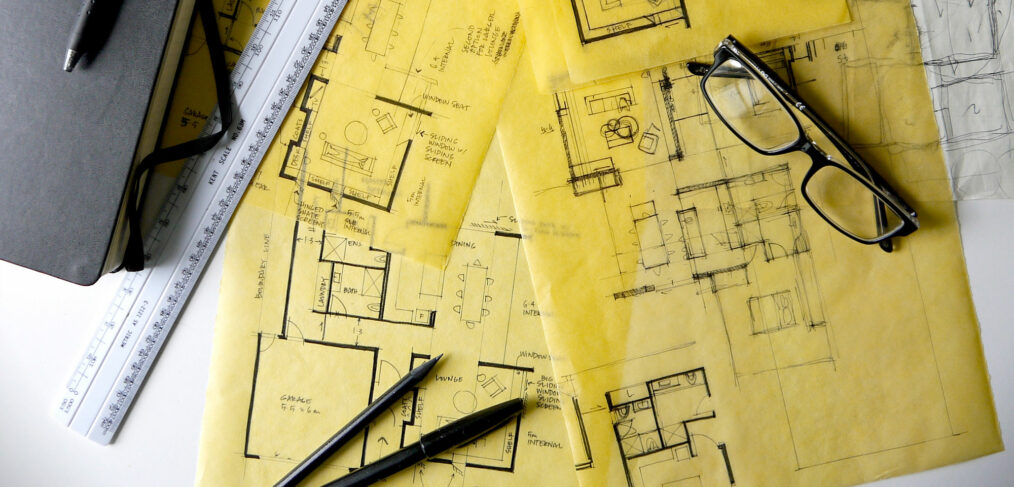
What does the process need to be?
Every business big and small has processes. What differentiates a sustainable practice is the awareness and conscious implementation of this process. Like many small business owners, I have unintentionally been developing a process through each of my projects. It would be tweaked as I went but was a fluid development without ever giving myself the time or mental space to really consolidate the steps or consider how I wanted to operate.
The basic framework I have built my process around is pretty standard – I work mostly with a fixed fee using the design stages we are all taught in one form or another:
Sketch Design, Design Development, Construction Documentation and Site Attendance.
The issue I have with these stages is that they are BIG. If each is undertaken as one body of work it is easy to lose sight of what it needs to achieve – timeframes are long and invoices are high. To tackle this, I have been working with each one broken into around 3-4 sub stages. These stages do not have allocated revisions but are specifically focussed so that comments can be rolled into the next stage. Progress on the design and documentation is easy to track and is a clearly defined and tangible scope that each portion of the fee directly relates to.
In a previous post (this one – check it out here if you missed it) I outlined my goals for this review. They all feed into the development of my workflow, which has to serve my clients, give me creative space as a designer and the allow for the future growth of Maike Design.
To serve my clients this process needs to effective and informative.
My Clients tend to be busy professionals with families. They have plenty to take care of already and I believe that a big part of our job is to make sure that everything runs as smoothly as possible. By having a process where we take care of ‘all the things’ efficiently and effectively, the way we deliver our projects allows our clients to be involved but does not require them to be the problem solvers.
We need to communicate everything they need to know when they need to know it. The ‘when they need to know it’ is important and by following a logical process the past understanding of the design informs the current stage. The process outline being developed will capture all of these decisions and allocate them to the appropriate stage.
Often Clients say they don’t necessarily know what they want but they’ll know when they see it. It is our responsibility to make sure the design intent and execution is communicated in our documentation and presented clearly.
To serve me as a designer the process needs to be efficient.
I believe two of the best things you can give to a design are a wide and varied range of inspiration and time. Time for the ideas to percolate, for them to move through various subconscious filters and to be able to wander through the spaces in your mind, each time filling in a new detail or discovering a new opportunity.
I don’t want to spend time figuring out tasks over and over that I can do just once. This process has to be efficient and allow me the maximum amount of time to spend on researching the background of an existing building and its context, really getting to know the needs of my clients, testing design ideas and enriching my design knowledge generally.
To be able to serve future aspirations for Maike Design, the process needs to be repeatable.
When I have someone working with me, I want the process to be documented and thorough enough that anyone on my team could technically jump onto any project and continue working on it at the standard my Clients and I expect. I want my process to provide prompts through the process to make sure nothing is forgotten and information is gathered and incorporated into the project at the appropriate time. This means that every detail of each step needs to be captured – what information needs to be gathered, where everything is filed, what templates apply, contact details of everyone involved and all the other nuts and bolts aspects need to be consistent between projects.
Now as I document my workflow and put together all the various templates and reference documents, the points listed above will act as my criterion for success. In my next post I will run through how I am capturing this process and keeping track of everything.
